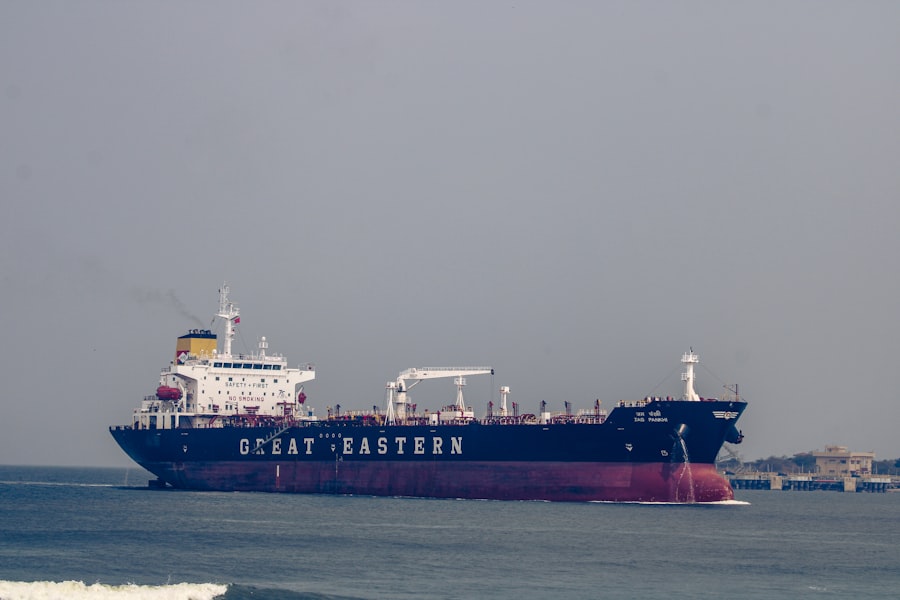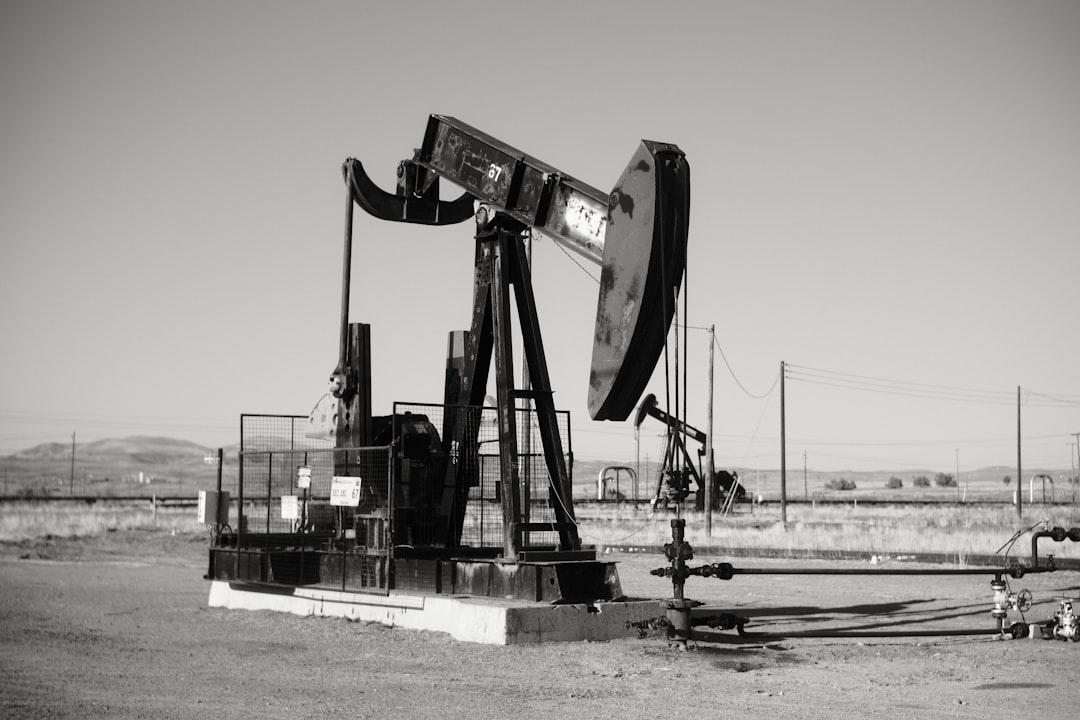The Soviet Union’s economy was intricately tied to its vast oil reserves, which played a pivotal role in shaping its domestic policies and international relations. As one of the world’s largest producers of oil, the Soviet Union relied heavily on this natural resource to fuel its industrial ambitions and sustain its economic growth. The dependency on oil not only influenced the internal dynamics of the Soviet economy but also dictated its foreign policy and geopolitical strategies.
This article delves into the multifaceted relationship between the Soviet Union and its oil resources, exploring the historical context, export strategies, economic implications, and the broader impact on society and the environment. Understanding the Soviet Union’s oil dependency requires an examination of how this reliance evolved over time. The discovery and subsequent exploitation of oil reserves became a cornerstone of the Soviet economic model, which prioritized heavy industry and military production.
As the global demand for energy surged, the Soviet Union positioned itself as a key player in the international oil market, leveraging its resources to gain political influence and economic stability. However, this dependency also brought about significant challenges, including vulnerability to market fluctuations and environmental degradation, which would ultimately shape the legacy of the Soviet state.
Key Takeaways
- The Soviet Union heavily relied on oil production and exports as a cornerstone of its economy and foreign policy.
- Oil export strategies were crucial for generating hard currency and maintaining economic stability during the Cold War.
- Dependency on oil made the Soviet economy vulnerable to global price fluctuations and market risks.
- Oil exports influenced the USSR’s relationships with key international partners and shaped geopolitical dynamics.
- Efforts to diversify the economy were limited, leaving a lasting legacy of economic challenges after the Soviet Union’s collapse.
Historical Background of Soviet Union’s Oil Production
The roots of the Soviet Union’s oil production can be traced back to the early 20th century, when significant oil fields were discovered in regions such as Baku, Azerbaijan. These discoveries laid the groundwork for what would become a major industry within the Soviet economy. Following the Bolshevik Revolution in 1917, the new government recognized the importance of oil as a strategic resource and nationalized existing oil companies.
This move aimed to consolidate control over production and distribution, ensuring that oil revenues could be directed towards state priorities. Throughout the 1920s and 1930s, the Soviet Union invested heavily in developing its oil infrastructure. The establishment of state-owned enterprises facilitated large-scale extraction and refining processes, which were essential for meeting both domestic needs and export demands.
By the time World War II erupted, the Soviet Union had become one of the leading oil producers in the world. The war further accelerated production efforts as oil became crucial for military operations. The post-war period saw a renewed focus on expanding oil output, with ambitious plans to tap into new reserves across Siberia and other remote regions.
Soviet Union’s Oil Export Strategies

The Soviet Union’s approach to oil exports was characterized by a combination of strategic planning and opportunistic maneuvers. In the early years of its existence, the government sought to establish trade relationships with other nations, particularly those in Eastern Europe and developing countries. By offering favorable terms and prices, the Soviet Union aimed to secure long-term partnerships that would ensure a steady flow of revenue from oil exports.
This strategy not only bolstered its economy but also served as a tool for spreading communist ideology. As global demand for oil increased during the 1970s, the Soviet Union capitalized on its position as a major supplier. The government implemented policies that prioritized oil production for export markets, often at the expense of domestic consumption.
This focus on exports allowed the Soviet Union to generate substantial foreign currency reserves, which were essential for importing goods and technology from Western nations. However, this strategy also created a dependency on external markets, making the economy vulnerable to fluctuations in global oil prices.
Impact of Oil Dependency on Soviet Union’s Economy
| Metric | Value | Year/Period | Notes |
|---|---|---|---|
| Oil Exports as % of Total Exports | 50% | 1980s | Significant reliance on oil exports for foreign currency earnings |
| Oil Production (million barrels per day) | 12.5 | 1980 | One of the world’s largest oil producers |
| Oil Revenue Contribution to GDP | 25% | 1980s | Oil sector was a major contributor to the Soviet economy |
| GDP Growth Rate | 2.5% | 1970s | Moderate growth supported by oil revenues |
| GDP Growth Rate | 0.5% | 1980s | Decline linked to falling oil prices and economic stagnation |
| Oil Price Drop Impact | -40% | 1986-1987 | Sharp decline in oil prices severely affected Soviet economy |
| Foreign Currency Reserves | Decreased by 30% | Mid-1980s | Due to reduced oil export revenues |
| Investment in Non-Oil Sectors | Low | 1980s | Overdependence on oil led to underinvestment elsewhere |
| Energy Export Dependency | High | 1980s | Economy vulnerable to global oil market fluctuations |
The economic landscape of the Soviet Union was profoundly shaped by its reliance on oil exports. On one hand, the influx of revenue from oil sales facilitated rapid industrialization and infrastructure development. The government was able to fund ambitious projects, such as the construction of new cities and transportation networks, which contributed to an overall increase in living standards for many citizens.
Additionally, oil revenues provided a buffer against economic downturns, allowing the state to maintain stability even during periods of global economic uncertainty. On the other hand, this dependency on oil also had detrimental effects on the Soviet economy. The overemphasis on oil production led to neglect in other sectors, such as agriculture and consumer goods manufacturing.
As a result, the economy became increasingly unbalanced, with a disproportionate focus on heavy industry at the expense of diversification. Furthermore, fluctuations in global oil prices had immediate repercussions for the Soviet economy; when prices fell in the 1980s, it exposed vulnerabilities that had been masked during periods of high demand. This economic instability ultimately contributed to broader systemic issues that plagued the Soviet Union in its final years.
The Role of Oil in Soviet Union’s Foreign Policy
Oil was not merely an economic asset for the Soviet Union; it was also a critical component of its foreign policy strategy. The government recognized that control over energy resources could enhance its geopolitical influence and provide leverage in international negotiations. By exporting oil to allied nations and developing countries, the Soviet Union sought to foster relationships that aligned with its ideological goals while simultaneously securing vital economic partnerships.
During periods of heightened tension with Western powers, such as during the Cold War, oil became a tool for exerting influence in regions like the Middle East and Africa. The Soviet Union provided military and technical assistance to countries rich in oil resources, thereby establishing itself as a key player in global energy politics. This strategy not only aimed to counter Western dominance but also sought to create a network of allies that could support Soviet interests on the world stage.
Challenges and Risks of Export Reliance

Despite its advantages, reliance on oil exports presented significant challenges for the Soviet Union. One major risk was exposure to volatile global markets; fluctuations in oil prices could lead to sudden economic crises that destabilized the entire nation. For instance, when prices plummeted in the late 1980s due to oversupply and reduced demand from Western nations, it triggered a financial crisis that exacerbated existing economic problems within the USSR.
Additionally, overreliance on oil exports stifled innovation and diversification within other sectors of the economy.
This lack of diversification made it difficult for the Soviet economy to adapt when faced with external shocks or changes in global demand patterns.
Ultimately, these challenges highlighted the inherent risks associated with an economy heavily dependent on a single commodity.
Soviet Union’s Oil Export Partners
The network of countries that engaged in trade with the Soviet Union for oil was diverse and strategically chosen. Eastern European nations were among the primary partners due to their political alignment with Moscow and their need for energy resources to fuel their own economies. Countries like Poland and Czechoslovakia relied heavily on Soviet oil imports, creating a mutually beneficial relationship that reinforced political ties within the Eastern Bloc.
Beyond Eastern Europe, developing nations in Africa and Asia also became important partners for Soviet oil exports. The USSR sought to establish relationships with countries rich in natural resources but lacking technological capabilities for extraction and refinement. By providing assistance in these areas while securing access to their oil reserves, the Soviet Union aimed to expand its influence globally while simultaneously addressing its own energy needs.
Soviet Union’s Oil Export Infrastructure
The infrastructure supporting Soviet oil exports was extensive and complex, reflecting decades of investment and development. Pipelines crisscrossed vast distances from remote extraction sites in Siberia to refineries and export terminals along coastlines. This network was crucial for ensuring that oil could be transported efficiently to both domestic markets and international partners.
However, maintaining this infrastructure posed significant challenges. Harsh weather conditions in Siberia often hampered operations, leading to delays and increased costs. Additionally, aging facilities required constant maintenance and upgrades to meet growing demand.
Despite these challenges, the Soviet government prioritized investment in infrastructure as a means of sustaining its position as a leading global oil supplier.
Environmental and Social Impacts of Oil Dependency
The environmental consequences of the Soviet Union’s oil dependency were profound and far-reaching. The extraction process often resulted in significant ecological degradation, including deforestation, soil contamination, and water pollution. In regions like Siberia, where delicate ecosystems were disrupted by drilling activities, long-term damage was inflicted on local flora and fauna.
Socially, communities living near extraction sites faced numerous challenges as well. While some benefited from job opportunities created by the booming oil industry, others experienced displacement or adverse health effects due to pollution and industrial accidents. The prioritization of oil production often came at the expense of local populations’ well-being, leading to tensions between state interests and community needs.
Attempts to Diversify Soviet Union’s Economy
Recognizing the risks associated with overreliance on oil exports, there were concerted efforts within the Soviet leadership to diversify the economy during various periods. Initiatives aimed at promoting technological innovation and developing alternative industries were introduced in response to growing concerns about sustainability and economic stability. However, these attempts often faced significant obstacles due to entrenched bureaucratic structures and resistance from powerful interests within the oil sector.
As a result, while there were sporadic efforts to shift towards a more balanced economic model, they ultimately fell short of achieving meaningful change before the dissolution of the USSR.
Legacy of Soviet Union’s Oil Dependency
The legacy of the Soviet Union’s oil dependency is complex and multifaceted. On one hand, it facilitated rapid industrialization and positioned the USSR as a major player in global energy markets; on the other hand, it created vulnerabilities that contributed to economic instability and environmental degradation. The reliance on a single commodity ultimately stifled innovation across other sectors while exposing systemic weaknesses that would become apparent during times of crisis.
As historians reflect on this aspect of Soviet history, it becomes clear that understanding oil dependency is essential for grasping broader themes related to state power, economic strategy, and environmental stewardship within one of history’s most influential superpowers. The lessons learned from this experience continue to resonate today as nations grapple with similar challenges related to resource management and economic diversification in an increasingly interconnected world.
The Soviet Union’s reliance on oil exports played a crucial role in its economy, particularly during the 1970s and 1980s when oil prices surged. This dependence on oil not only shaped its foreign policy but also contributed to economic vulnerabilities that would later be exposed. For a deeper understanding of the implications of this reliance, you can read more in the article found here.
WATCH THIS 🛑 The $10 Trillion Lie: How The USSR Was Bankrupt 10 Years Before It Fell
FAQs
What role did oil exports play in the Soviet Union’s economy?
Oil exports were a crucial source of revenue for the Soviet Union, providing significant foreign currency earnings that helped finance imports and support the overall economy.
When did the Soviet Union become a major oil exporter?
The Soviet Union became a major oil exporter in the 1960s and 1970s, following the development of large oil fields in Western Siberia and other regions.
How did oil exports affect the Soviet Union’s foreign relations?
Oil exports strengthened the Soviet Union’s geopolitical influence by providing energy resources to allied countries and generating trade partnerships, especially with Western Europe.
What were the risks of the Soviet Union’s reliance on oil exports?
Heavy dependence on oil exports made the Soviet economy vulnerable to fluctuations in global oil prices, which could lead to economic instability during periods of price decline.
Did the Soviet Union invest oil revenues in other sectors?
While some oil revenues were invested in industrial and military development, the Soviet economy remained heavily dependent on energy exports, limiting diversification.
How did the collapse of the Soviet Union affect its oil industry?
The collapse led to significant disruptions in production and export infrastructure, but many former Soviet republics, especially Russia, continued to be major oil producers and exporters.
What was the impact of oil exports on the Soviet Union’s domestic economy?
Oil exports provided essential foreign currency but also contributed to economic imbalances, with some sectors neglected in favor of energy production and export.
Which regions in the Soviet Union were key to oil production?
Key oil-producing regions included Western Siberia, the Volga-Urals region, and parts of the Caucasus. Western Siberia became the largest oil-producing area by the 1970s.
How did global oil markets influence Soviet oil export policies?
The Soviet Union adjusted its production and export strategies based on global oil demand and prices, often increasing output during high-price periods to maximize revenue.
What was the significance of oil exports for the Soviet Union during the Cold War?
Oil exports were strategically important, providing the Soviet Union with the financial means to sustain its military and political ambitions during the Cold War era.
